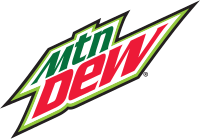**Mountain Dew Origins and Evolution:**
– Developed by Tennessee bottlers Barney and Ally Hartman in the 1940s.
– Trademarked in 1948 for the soft drink.
– Tip Corporation revised the flavor and launched it in 1961.
– PepsiCo acquired the rights in 1964.
– Packaging evolution from hillbilly cartoon to modern designs.
– Logo changes over time, rebranded as ‘Mtn Dew’ in 2008.
– Introduction of sidekick bottles in 2010 with a sleek design.
– Removal of brominated vegetable oil in 2020.
**Mountain Dew Promotions and Collaborations:**
– DEWmocracy campaigns involving public in choosing new flavors.
– Introduction of Game Fuel tied to popular video games.
– Partnership with Boston Beer Company in 2022 for alcohol-infused drinks.
– Green Label partnerships with Complex Media, limited edition art, and music label.
– Sponsorship of Dew Tour, action sports athletes, and video game designers.
**Mountain Dew Flavor Innovations and Releases:**
– DEWmocracy flavors sales totaling 25 million cases in 2008.
– Introduction of Amp Game Fuel with re-sealable lid and new flavors.
– Release of different Game Fuel variants and flavors tied to video games.
– Introduction of Mountain Dew Spark and Spark Zero in 2022.
– Return of popular flavors like Pitch Black and Typhoon.
**Mountain Dew Marketing Strategies and Campaigns:**
– Various marketing campaigns like DEWmocracy and FanDEWmonium.
– Mountain Dew’s collaboration with artists like Jay Electronica.
– Controversies surrounding ingredients like brominated vegetable oil and high-fructose corn syrup.
– Marketing controversies and criticisms faced by Mountain Dew.
– Mountain Dew’s continued innovation with unexpected flavor revamps.
**Mountain Dew Controversies and Unique Campaigns:**
– Rumors about Mountain Dew affecting sperm count.
– Concerns about the high caffeine content and ingredients in Mountain Dew.
– Unique campaigns like Doritos Quest and Puppy Monkey Baby advertisement.
– DEWcision campaigns for fan-favorite flavors like Baja Blast and Pitch Black.
– Introduction of limited edition flavors and unique collaborations in Mountain Dew’s product releases.
Mountain Dew, stylized as Mtn Dew in some countries, is a carbonated soft drink brand produced and owned by PepsiCo. The original formula was invented in 1940 by Tennessee beverage bottlers Barney and Ally Hartman. A revised formula was created by Bill Bridgforth in 1958. The rights to this formula were obtained by the Tip Corporation of Marion, Virginia. William H. "Bill" Jones of the Tip Corporation further refined the formula, launching that version of Mountain Dew in 1961. In August 1964, the Mountain Dew brand and production rights were acquired from Tip by the Pepsi-Cola company, and the distribution expanded across the United States and Canada.
 | |
 | |
| Type | Citrus soft drink |
|---|---|
| Manufacturer | PepsiCo |
| Country of origin | United States |
| Introduced | 1940 |
| Related products | |
| Website | mountaindew |
Between the 1940s and 1980s there was only one variety of Mountain Dew, which was citrus-flavored and caffeinated in most markets. Diet Mountain Dew was introduced in 1988, followed by Mountain Dew Red, which was introduced and discontinued in 1988. In 2001, a cherry-flavored variant called Code Red debuted. Expansions of the product line have continued to this day, including specialty offerings, limited time productions, region-specific and retailer-specific flavors of Mountain Dew.
Production was extended to the United Kingdom in 1996, but was phased out in 1998. A similarly named but different-tasting product, with a recipe more similar to the original American product has been sold in the U.K. under the name "Mountain Dew Energy" since 2010 and in Ireland since the spring of 2011. As of 2017, Mountain Dew represented a 6.6% share of the carbonated soft drinks market in the U.S. Its competition includes the Coca-Cola Company's Mello Yello and Surge, and Keurig Dr Pepper's Sun Drop; Mountain Dew accounted for 80% of citrus soft drinks sold within the U.S. in 2010.[clarification needed]
